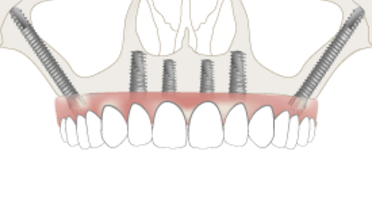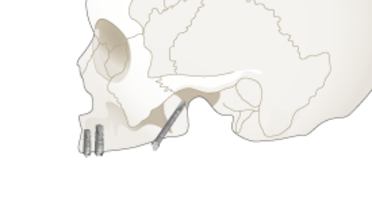-
0
Patient Assessment
- 0.1 Patient demand
- 0.2 Overarching considerations
- 0.3 Local history
- 0.4 Anatomical location
- 0.5 General patient history
-
0.6
Risk assessment & special high risk categories
- 5.1 Risk assessment & special high risk categories
- 5.2 age
- 5.3 Compliance
- 5.4 Smoking
- 5.5 Drug abuse
- 5.6 Recreational drugs and alcohol abuse
- 5.7 Parafunctions
- 5.8 Diabetes
- 5.9 Osteoporosis
- 5.10 Coagulation disorders and anticoagulant therapy
- 5.11 Steroids
- 5.12 Bisphosphonates
- 5.13 BRONJ / ARONJ
- 5.14 Radiotherapy
- 5.15 Risk factors
-
1
Diagnostics
-
1.1
Clinical Assessment
- 0.1 Lip line
- 0.2 Mouth opening
- 0.3 Vertical dimension
- 0.4 Maxillo-mandibular relationship
- 0.5 TMD
- 0.6 Existing prosthesis
- 0.7 Muco-gingival junction
- 0.8 Hyposalivation and Xerostomia
- 1.2 Clinical findings
-
1.3
Clinical diagnostic assessments
- 2.1 Microbiology
- 2.2 Salivary output
-
1.4
Diagnostic imaging
- 3.1 Imaging overview
- 3.2 Intraoral radiographs
- 3.3 Panoramic
- 3.4 CBCT
- 3.5 CT
- 1.5 Diagnostic prosthodontic guides
-
1.1
Clinical Assessment
-
2
Treatment Options
- 2.1 Mucosally-supported
-
2.2
Implant-retained/supported, general
- 1.1 Prosthodontic options overview
- 1.2 Number of implants maxilla and mandible
- 1.3 Time to function
- 1.4 Submerged or non-submerged
- 1.5 Soft tissue management
- 1.6 Hard tissue management, mandible
- 1.7 Hard tissue management, maxilla
- 1.8 Need for grafting
- 1.9 Healed vs fresh extraction socket
- 1.10 Digital treatment planning protocols
- 2.3 Implant prosthetics - removable
-
2.4
Implant prosthetics - fixed
- 2.5 Comprehensive treatment concepts
-
3
Treatment Procedures
-
3.1
Surgical
-
3.2
Removable prosthetics
-
3.3
Fixed prosthetics
-
3.1
Surgical
- 4 Aftercare
Pterygoid implants
Key points
- Pterygoid implant insertion is an alternative to avoid sinus-lifting or other grafting procedures to treat the posterior maxilla
- Pterygoid implant are especially used in partial edentulism in order to avoid distal cantilevers
- The placement of a pterygoid implant requires surgical experience
- Pterygoid implants have high success rates, similar bone loss levels to those of conventional implants, minimal complications and a good patient acceptance
Indications
In the edentulous upper jaw the placement of implants can be challenging due to limited bone quantity and the presence of the maxillary sinus. Pterygoid implants present an alternative option to use residual bone for implant anchorage and to overcome the need for augmentation procedures. To avoid distal cantilevers the insertion of a pterygoid implant can be indicated in partial and total edentulism. The findings in literature show no clear differences between pterygoid and pterygo-maxillary implants.
Clinical recommendations
The terms "pterygoid implants", "pterygo-maxillary implants" and "tuberosity implants" are used interchangeably in scientific literature (for what is described as implants in the retromolar region). By definition, all "pterygoid implants" encompass the tuberosity region and engage the pterygoid plate but not all "tuberosity implants" necessarily engage the pterygoid plates (they are placed in a more anterior position of the pterygo-maxillary area, parallel to the posterior wall of the sinus).
The success rates for all these different treatment possibilities seem to be similar. Therefor the need for engaging the implants at the level of the pterygoid plate is currently controversially discussed.
Prognosis
The average success rate for pterygoid implants lies at 90.7%. However, there is still insufficient data about implant failures that occur beyond the first year of load, thus making it difficult to draw conclusions about long-term survival rates of these implants.
Complications
Insertion of implants at the level of the pterygoid plate can be potentially associated with bleedings (from the pterygoid plexus or the a. maxillaris). Nevertheless this can be avoided by inserting the implant just at the level of the tuberosity. Another complication is lack of primary implant stability [Candel 2012] which can be solved through underpreparation drilling protocols and innovative implant designs (NobelActive).



Pterygoid ISRAEL system
Using the Pterygoid system Can the implants all be completed on the initial surgery or must a waiting period of 6 months before the crowns are placed
Using the Pterygoid system Can the implants all be completed on the initial surgery or must a waiting period of 6 months before the crowns are placed
In reply to Pterygoid ISRAEL system by Anonymous
in the pterygoid implant we usually get the condition for the immediately loading